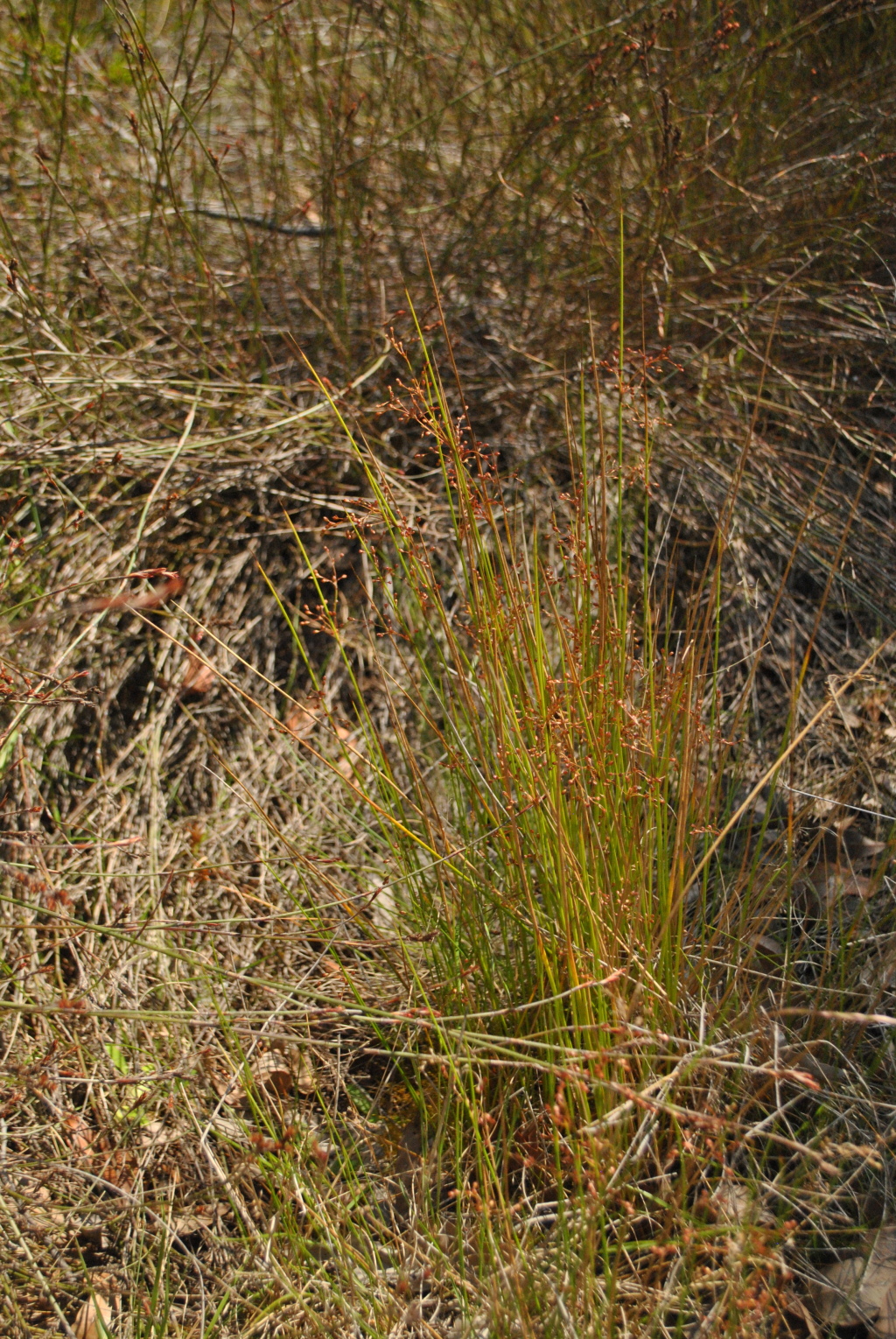Juncus pauciflorus
R.Br. Loose-flower RushTufted perennial with horizontal or ascending rhizomes. Cataphylls tight, dark brown to dark reddish-brown towards the base, to c. 15 cm long. Culms rather lax and often arching, bright shiny green, 20–100 cm high and 0.4–2.2(–3) mm diam.; striations (14–)20–50, not strongly raised to moderately strongly raised; pith cobwebby, continuous or very rarely slightly interrupted; stomates superficial. Inflorescence loose, flowers typically remotely separated (rarely close) along lax and often strongly curved branchlets; primary bract continuous with culm, to c. 40 cm long; prophylls present. Tepals stramineous or with a brown to red-brown longitudinal band on either side of the stramineous midrib, 2.0–3.0 mm long; stamens 6, anthers 0.3–0.8 mm long. Capsules often with a reddish-brown to golden-brown apex, exceeding the tepals, 2.2–3.5 mm long. Flowers mostly Nov.–Jan., seeds shed mostly Jan.–Apr.
Wim, GleP, Brid, VVP, VRiv, GipP, OtP, WaP, Gold, CVU, GGr, DunT, NIS, EGL, EGU, WPro, HSF, HNF, OtR, Strz, MonT, HFE, VAlp. Also WA, SA, NSW, Tas. New Zealand. A common species on and south of the Great Dividing Range. Most frequently encountered in moist shady sites.
A distinctive species, but occasionally confused with Juncus usitatus, J. alexandri subsp. alexandri and J. continuus. Hybrids with J. procerus and J. pallidus are known.
Albrecht, D.E. (1994). Juncus. In: Walsh, N.G.; Entwisle, T.J., Flora of Victoria Vol. 2, Ferns and Allied Plants, Conifers and Monocotyledons, pp. 197–233. Inkata Press, Melbourne.
 Spinning
Spinning



